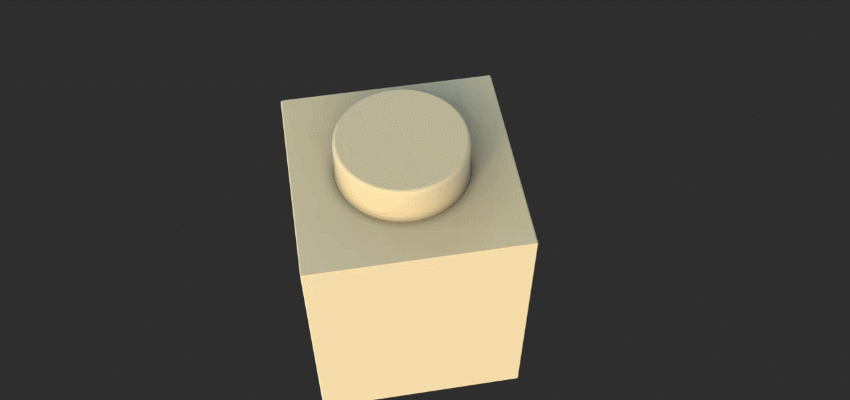3ds Max is a computer graphics program that can be use to create 3D models, animations, and digital images. It is widely use in the computer graphics industry and is well-known for providing a robust toolkit for 3D artists. Autodesk owns 3ds Max, which is popular among game developers, TV commercial studios, and architects. Autodesk recently unveiled 3ds Max 2023.2 new features. Let’s dig into the ones you need to know about!
3Ds Max 2023.2 and new features
The update adds a new Array Modifier, for tasks from procedural modeling to motion graphics generation, and improves chamfering, mesh retouching, and glTF export operations.
The new system features:
- Update Array Modifier
- Improved topology when creating new faces, moving vertices, or using the retriangulate function in editable poly objects with enhanced triangulate.
- Improved MeshSmooth performance
- Update to Chamfer Limits that will prevent self-intersections in the chamfered surface, while also avoiding over-limiting. When working with non-explicit normals, the Chamfer modifier will also produce better surface normals.
- Various improvements to Trackview to improve reliability and ease of access.
- Improved Delta Mush computation for enhanced symmetrical results across the mesh to complement Skin modifier deformation.
- The PFlow object settings is update to ensure greater consistency between viewport, rendering quality, and sampling. Additionally, new Viewport Quality and Integration Steps settings is add to various PFlow presets.
- You can now convert Physical Materials to glTF Materials by using the Scene Converter and a new glTF Preset. Furthermore, the glTF exporter can now export all map channels on your mesh data rather than just Map Channel 1.
- MAXtoA 5.4.0.37 includes V-Ray scene converter improvements, volume shading, and support for pinned curves and nested instancers.
- Plus much more
In addition, 3ds Max 2023.2 also fixes some issues related to Animation, Core, File IO, MAXScript, Material Editors, Modeling, Rendering, and etc.
Updated Delta Mush computation
A bug in which the Delta Mush operator (Data Channel modifier) caused problems with some symmetrical meshes has been fixed. In the Delta Mush UI settings, a new option called Use Legacy Compute is now available.
The Use Legacy Compute option lets you turn off the improved algorithm in case you were relying on the legacy behavior and is turned on automatically whenever you load geometry that uses the legacy method. This option is turn off for all new Delta Mush scenes.
Note: Toggling the checkbox switches between the legacy and improved algorithms; however, make sure to do so only when the geometry is in the “neutral” or “rest” pose state, as the rest pose stores information critical to Delta Mush functionality.
glTF updates
- The Scene Converter contains a new preset called “PhysicalToGLTF” that allows you to easily convert all physical materials in a scene to glTF materials.
- More over, the glTF Exporter now exports all map channels instead of just channel 1. See Exporting to glTF.
MeshSmooth Performance
The NURMS algorithm is now up to 15% faster in the MeshSmooth modifier and NURMS subdivision for Editable Mesh and Editable Poly surfaces.
Updated Particle Flow Source defaults
Some of the presets for the Particle Flow Emission and System Management settings have been changed at the request of the customer.
The Viewport Quality Multiplier value is now set to 100% (it was previously set to 50%), and the System Management Integration Step value is set to Frame (previously it was Half Frame).
These modifications bring the settings in line with the Quality Multiplier and Integration Step Render values, saving time spent adjusting these settings to produce an accurate render output.
New FBX Export workflow for Standard Materials
As of 3ds Max 2021, there was a change to the way default materials were exported by FBX. Since 2021, FBX exports with a Physical Material by default.
Before 3ds Max 2021, the FBX Exporter used a Standard Material, now known as a ‘Standard (Legacy)’ Material. If you want to continue to use the legacy method, using Standard (Legacy)’ Materials, use the workflow in this topic: FBX Export with Standard (Legacy) Materials.
Arnold for 3ds Max 5.4.0.37
MAXtoA 5.4.0.37 for Arnold 7.1.3.0 is include with 3ds Max, and it includes an improved V-Ray scene converter, volume shader improvements, and new support for pinned curves and nested instancers. For a complete list of features, see the Arnold for 3ds Max 5.4.0.37 release notes.
3S Cloud Render Farm – Powerful Cloud Rendering for 3ds Max and other plugins
3S Cloud Render Farm is an in the page output (render farm) is highly recommend for 3ds Max and many other rendering software it supports e.g. Redshift, Octane, V-ray, Maxwell etc.
We provide server specialists for most of the requirements of home design. You can root the high to use by the host of us, I’m to grow up speed output.
If you have any questions, feel free to contact 3S Cloud Render Farm at any time. Register ACCOUNT today and get FREE COUPON to experience our service. We are always ready to assist you 24/7!

